Cover letter template for civil engineer
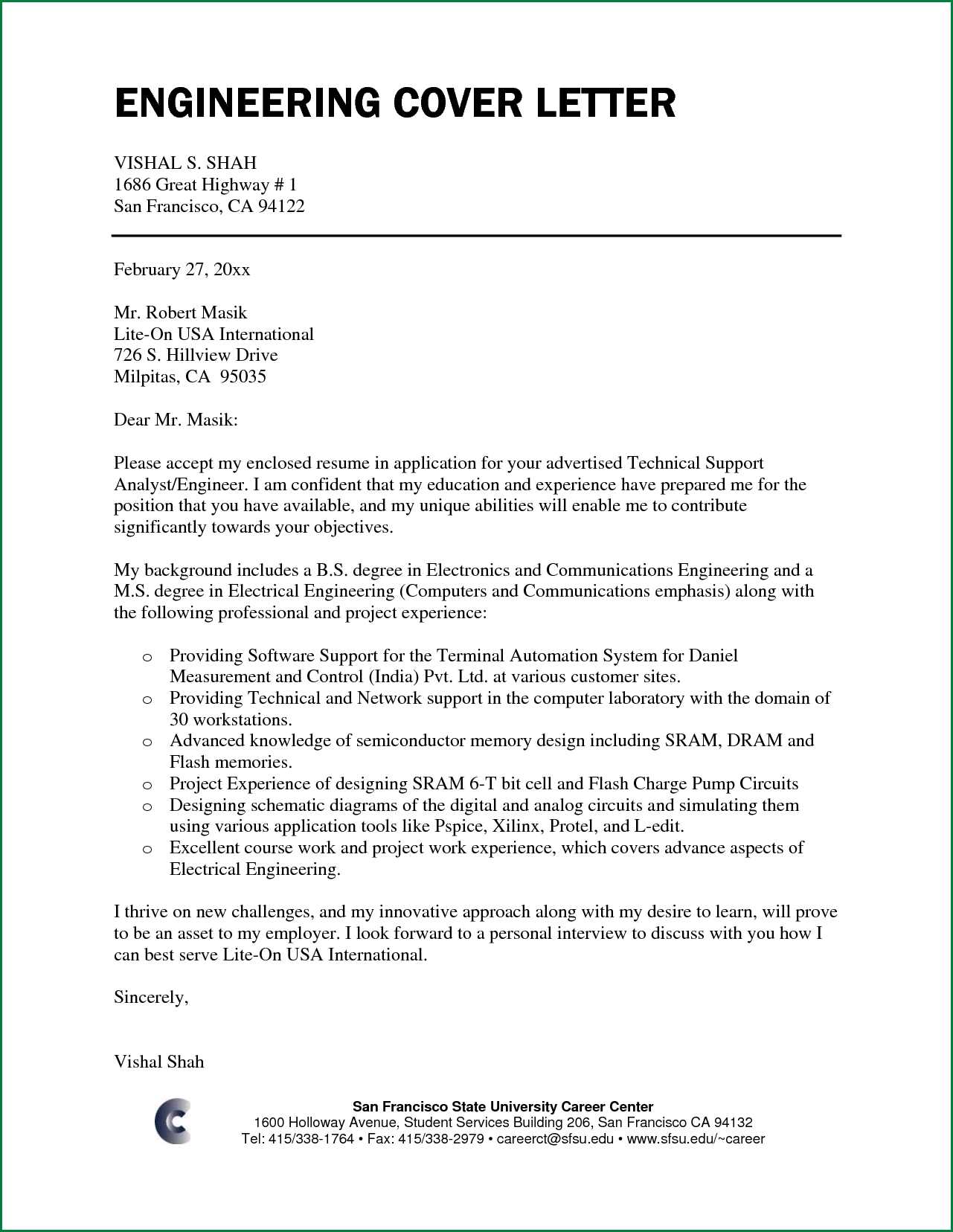
Craft a clear and concise cover letter that reflects your skills and experiences directly related to the position you’re applying for. Highlight your engineering expertise and the specific projects you’ve worked on. Keep your tone confident, professional, and tailored to the company’s needs.
Start with an engaging opening that draws attention. Mention how your background aligns with the job description, and avoid generic statements. Focus on what makes you a strong candidate for this role, emphasizing your problem-solving abilities and technical proficiency in civil engineering.
Next, provide specific examples of your work that demonstrate your ability to manage projects, collaborate with multidisciplinary teams, and meet deadlines. Detail the engineering software and tools you’ve mastered and the relevant methodologies you’ve applied in your previous positions.
Finish your letter with a brief call to action, expressing your enthusiasm to discuss how you can contribute to the team. Use a confident closing statement that leaves a lasting impression and encourages further communication.
Cover Letter Template for Civil Engineer
Begin your cover letter with a clear introduction that states the specific position you are applying for and where you found the job posting. Be concise, but make sure to highlight your excitement about the opportunity.
Next, emphasize your relevant experience. Focus on key achievements and projects you’ve worked on. Mention how your skills in structural design, project management, or site analysis align with the company’s needs. Use numbers to quantify your success where possible, such as cost savings, project completion times, or improvements in safety standards.
- Provide specific examples of projects you’ve led or contributed to, detailing the outcomes.
- Highlight any leadership or team collaboration experiences, particularly in multi-disciplinary teams.
- Show your ability to manage deadlines and budgets effectively.
In the next paragraph, show your enthusiasm for the company. Link your values with their mission and vision, and explain how your background makes you a strong fit for their team. Mention any specific technologies or techniques used by the company that you are familiar with, demonstrating your knowledge of industry trends.
- Describe how you keep up with industry standards and innovations.
- Highlight any specialized software or methodologies you are proficient in, such as AutoCAD, BIM, or Lean construction.
Conclude your cover letter by expressing your eagerness to discuss your qualifications further in an interview. Thank the employer for their time and consideration, and include a polite closing.
Customizing Your Cover Letter for Civil Engineering Roles
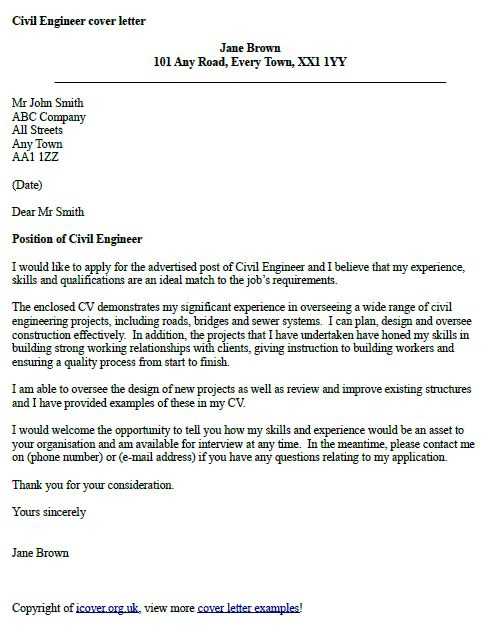
Tailor your cover letter to align with the specific needs of the civil engineering role you are applying for. Begin by focusing on the job description and identifying key skills and qualifications the employer seeks. Highlight your most relevant experience, especially projects or tasks that directly relate to the position at hand. Use specific examples of how your expertise contributed to project success, such as cost-saving solutions, efficiency improvements, or successful management of project timelines.
Research the company’s values and recent projects. Customize your letter by incorporating references to these initiatives and demonstrating how your skills and values align with theirs. This shows that you are genuinely interested in the organization and can contribute to its future goals. For instance, if the company is known for sustainable infrastructure, discuss any relevant experience you have with green building techniques or environmental compliance.
Be concise yet precise. Avoid generic phrases and emphasize how your technical skills, like proficiency in structural analysis software or experience with specific construction methods, can address the challenges the company faces. Highlight certifications or continuing education relevant to the position, such as your knowledge of industry standards or specialized software.
Conclude by expressing enthusiasm for the opportunity to contribute to the company’s projects and your readiness to take on new challenges. A well-customized cover letter not only reflects your qualifications but also your genuine interest in the role and company culture.
Highlighting Key Skills for Civil Engineering Employers
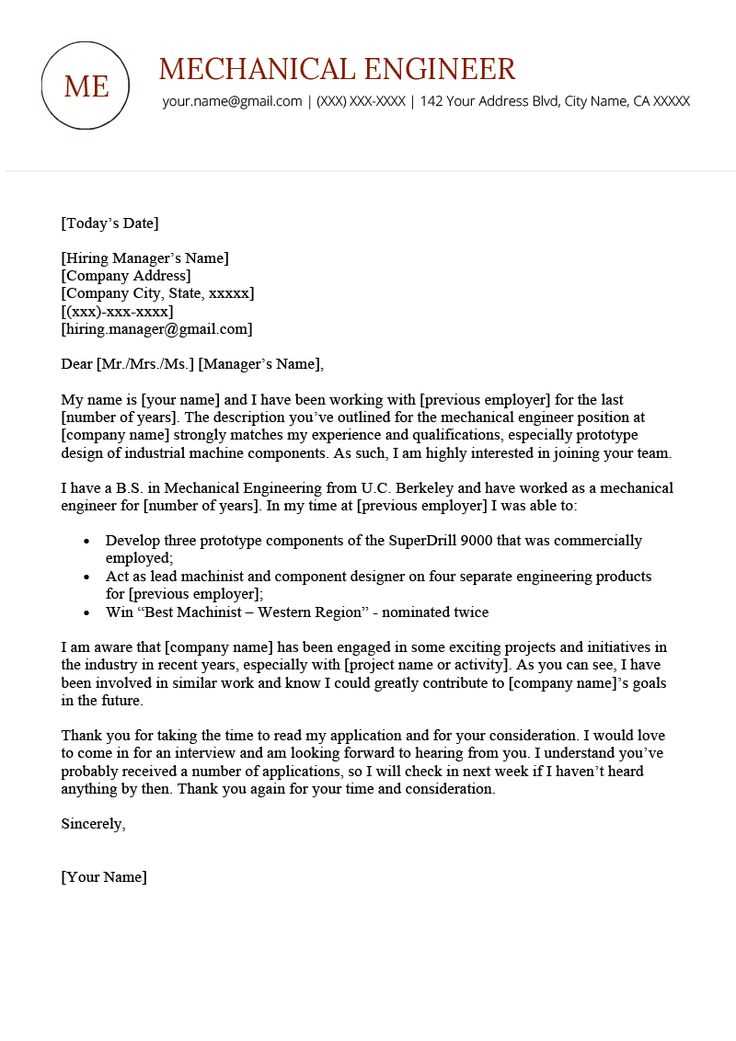
Focus on showcasing a strong command of technical skills. Demonstrate your proficiency in software like AutoCAD, Civil 3D, or Revit, which are highly valued by employers. Be clear about your experience with site analysis, construction management, and project design. Highlight specific projects where these tools helped you deliver successful results.
Problem-Solving Abilities
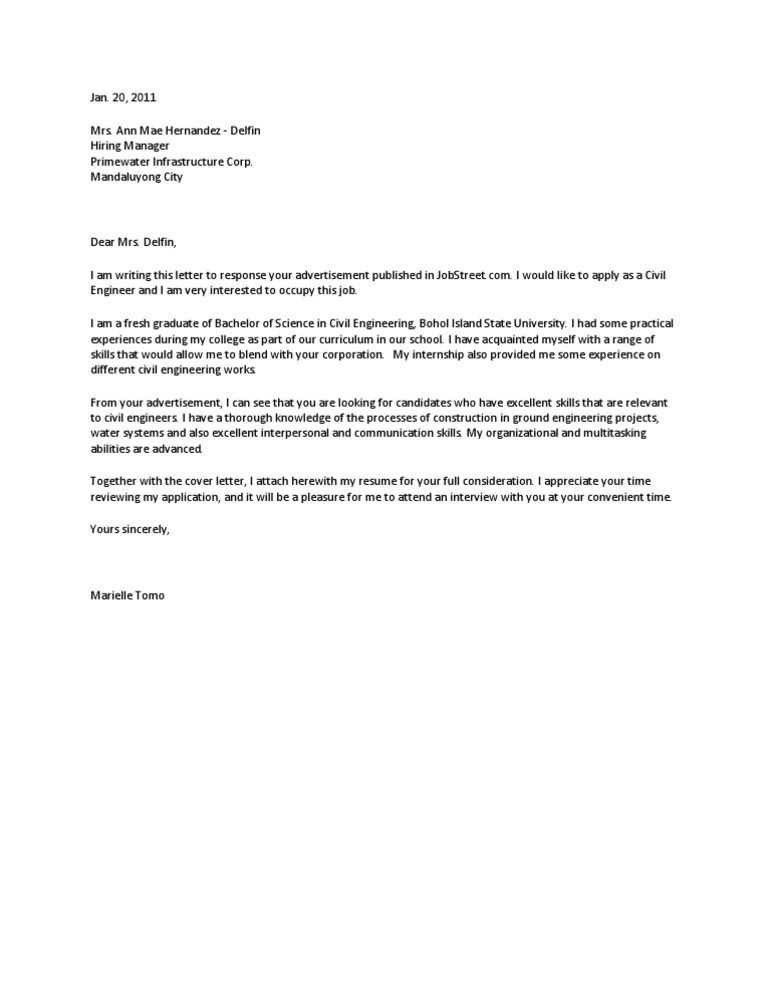
Employers value candidates who can identify challenges early and propose clear, actionable solutions. Mention your experience solving complex engineering problems under tight deadlines, such as managing unexpected site conditions or adapting designs to meet regulatory requirements. Show how your problem-solving approach has led to cost savings or enhanced project timelines.
Communication and Collaboration
Effective communication is critical in civil engineering. Highlight your ability to work in cross-functional teams and interact with clients, contractors, and regulatory agencies. Focus on examples where you effectively presented complex technical concepts to non-technical stakeholders. Show how clear communication improved project outcomes and facilitated collaboration with diverse teams.
Don’t forget to mention your understanding of construction standards and regulations, as this knowledge is highly sought after. Providing specific examples where you ensured compliance with local, state, or federal codes will help you stand out to potential employers.
Structuring the Cover Letter: Do’s and Don’ts
Do: Be Clear and Direct
Keep your sentences clear and to the point. Hiring managers value brevity. Focus on your qualifications and how they align with the job requirements. Avoid unnecessary details about personal history that don’t relate to the role. State exactly why you’re a good fit for the job in the first paragraph.
Don’t: Overuse Formal Language
Avoid overly formal language that makes your cover letter sound stiff or robotic. Speak naturally and use a conversational tone while maintaining professionalism. Overcomplicated language might create distance instead of building rapport with the reader.
Do: Showcase Your Skills
Highlight relevant skills with specific examples. For instance, mention successful projects or specific engineering tools you’ve mastered. Show how these skills will contribute to the company’s objectives.
Don’t: Rehash Your Resume
Don’t simply repeat what’s in your resume. Use the cover letter to expand on how your experience will benefit the company. Focus on what makes you stand out rather than summarizing your job history.
Do: Tailor It to the Job
Customize the cover letter for each application. Address the company’s specific needs, and align your strengths with their requirements. Research the company culture and incorporate it into your letter to show that you understand their values.
Don’t: Use Generic Phrases
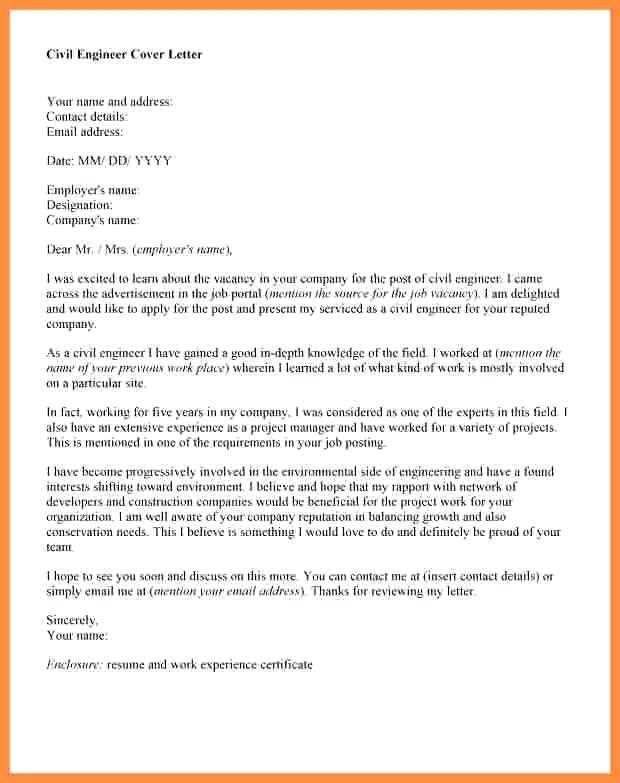
Generic phrases such as “I’m a hard worker” or “I’m passionate about engineering” don’t set you apart. Be specific about how you’ve demonstrated those qualities in the past, and provide concrete examples of your work.
Do: End with a Call to Action
Finish with a strong closing paragraph that invites further conversation. Politely ask for an interview or a chance to discuss your qualifications in more detail. This shows initiative and eagerness.
Don’t: Leave a Weak Conclusion
A weak ending, such as “Thank you for your time,” doesn’t leave a lasting impression. Make sure to leave a confident and engaging final note, reinforcing your interest in the role.
Addressing the Employer: How to Make a Strong First Impression
Directly address the hiring manager by name whenever possible. A personalized greeting shows respect and attention to detail. If the name is unavailable, use a specific title, such as “Dear Hiring Manager,” to keep the tone professional yet personal. Avoid generic greetings like “To Whom It May Concern” unless no other option exists.
Start with a concise, clear statement of your intent. Mention the position you are applying for and where you found the job listing. This eliminates any ambiguity and shows you’ve researched the opportunity.
Keep your opening brief but impactful. Focus on the value you bring to the organization. Highlight key qualifications or experiences that directly relate to the role, offering a glimpse of how you can contribute. For example, if you have relevant project experience, briefly mention it to create an immediate connection to the job description.
Refrain from using overused phrases. Instead, speak to the unique aspects of your background that align with the company’s needs. Tailor your tone and language to the company culture based on your research of their website or job posting. This creates an impression of thoughtfulness and genuine interest.
Showcasing Relevant Projects and Experiences
Highlight your involvement in projects that directly align with the role you’re applying for. Mention specific tasks you managed or contributed to, such as designing structural elements, coordinating with contractors, or overseeing the execution of plans. Use concrete numbers to showcase the scale of your projects, for example, the size of the structures, the budget you worked with, or the number of team members you led.
Focus on the technical skills you applied during these projects. If you worked with advanced software or tools, like AutoCAD or Civil 3D, state your proficiency and how it helped you achieve project goals. Highlight any innovative solutions you developed, such as optimizing construction methods or addressing environmental challenges, and connect them to the project’s success.
When possible, include measurable outcomes. For example, “Managed a team of 10 engineers to complete a bridge project ahead of schedule by 15%,” or “Designed a wastewater treatment system that reduced costs by 20% without compromising quality.” This shows you deliver tangible results.
Lastly, mention any cross-disciplinary collaboration you were part of, such as working with architects, urban planners, or environmental consultants. This demonstrates your ability to communicate effectively and contribute to multi-faceted projects.
Final Touches: Proofreading and Tailoring to Specific Jobs
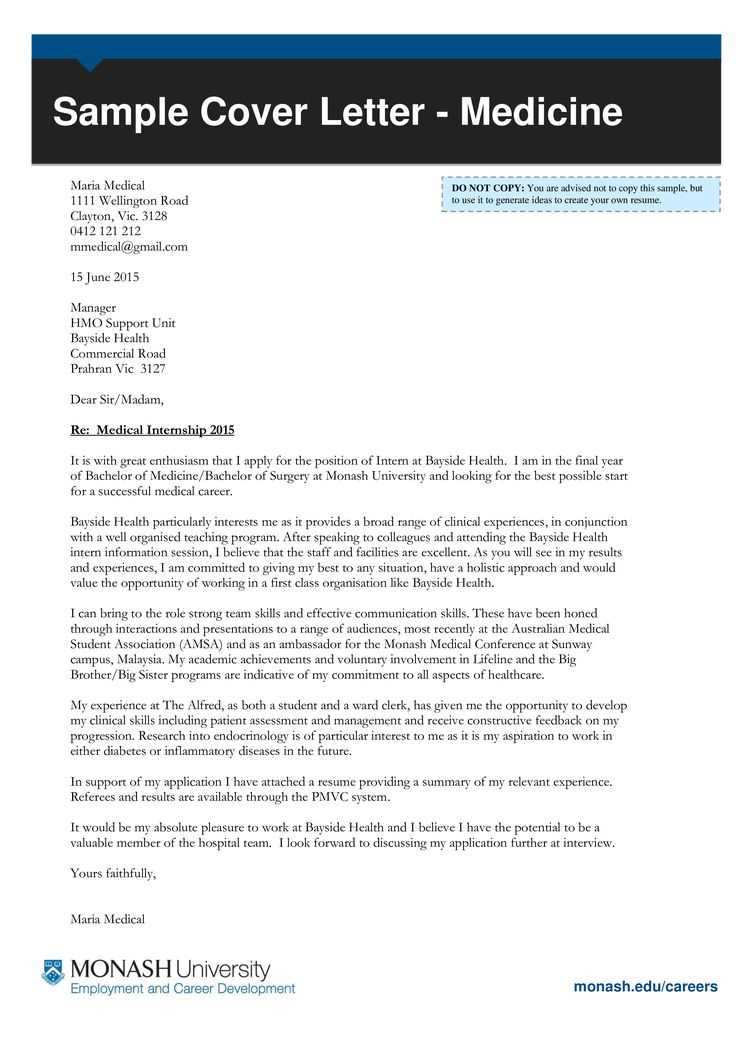
Thorough proofreading is non-negotiable. Scrutinize your cover letter for any grammar or spelling mistakes. Reading aloud helps catch awkward phrasing. Also, double-check for consistency in your contact information and formatting. Use tools like grammar checkers to get an extra layer of accuracy, but don’t solely rely on them.
Customize your cover letter for each application. Align your skills with the job description to show you understand the specific requirements. Use the company’s language to make your qualifications match their needs. Tailor your professional achievements to highlight the skills that matter most to the hiring manager.
Key Areas to Tailor
| Area | How to Tailor |
|---|---|
| Skills | Focus on those directly related to the job description. |
| Experience | Highlight your work that matches the company’s goals. |
| Personalized Introduction | Reference the specific role and company to create a connection. |
Final Checkpoints
Ensure your tone matches the company’s culture–whether it’s formal or casual. Keep your language clear and concise. Don’t forget to confirm the letter’s format is compatible with ATS systems, if applicable. Save your document in the requested format, often PDF or Word. Double-check the job details and the company name to avoid embarrassing mistakes.